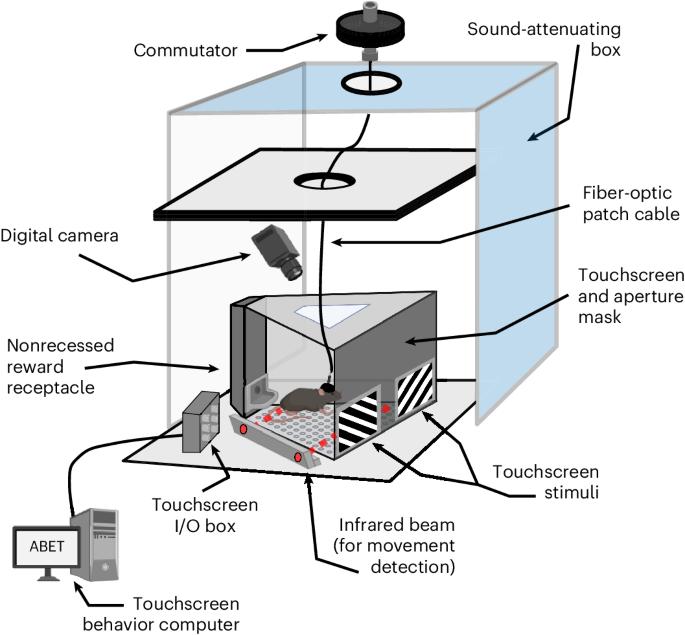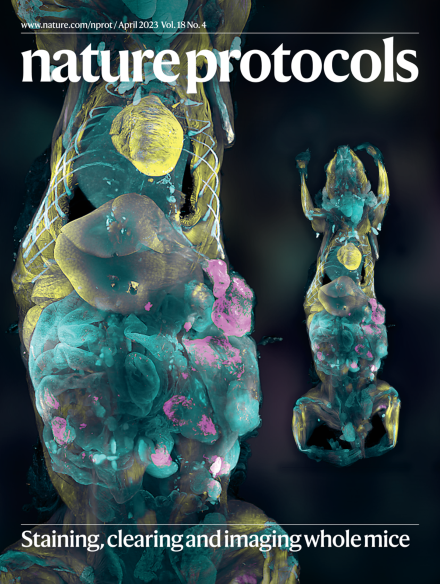Integrating optical neuroscience tools into touchscreen operant systems
IF 16
1区 生物学
Q1 BIOCHEMICAL RESEARCH METHODS
引用次数: 0
Abstract
Unlocking the neural regulation of complex behavior is a foundational goal of brain science. Touchscreen-based assessments of behavior have been used extensively in the pursuit of this goal, with traditional pharmacological and neurochemical approaches being employed to provide key insights into underlying neural systems. So far, optically based approaches to measure and manipulate neural function, which have begun to revolutionize our understanding of relatively simple behaviors, have been less widely adopted for more complex cognitive functions of the type assessed with touchscreen-based behavioral tasks. Here we provide guidance and procedural descriptions to enable researchers to integrate optically based manipulation and measurement techniques into their touchscreen experimental systems. We focus primarily on three techniques, optogenetic manipulation, fiber photometry and microendoscopic imaging, describing experimental design adjustments that we have found to be critical to the successful integration of these approaches with extant touchscreen behavior pipelines. These include factors related to surgical procedures and timing, alterations to touchscreen operant environments and approaches to synchronizing light delivery and task design. A detailed protocol is included for each of the three techniques, covering their use from implementation through data analysis. The procedures in this protocol can be conducted in as short a time as a few days or over the course of weeks or months. This protocol extension enables researchers to integrate optically based manipulation and measurement techniques into their touchscreen experimental systems, focusing on optogenetic manipulation, fiber photometry and microendoscopic imaging.

将光学神经科学工具集成到触摸屏操作系统中。
解开复杂行为的神经调节机制是脑科学的一个基本目标。在追求这一目标的过程中,基于触摸屏的行为评估已被广泛使用,传统的药理学和神经化学方法被用来提供对潜在神经系统的关键见解。到目前为止,基于光学的测量和操纵神经功能的方法已经开始彻底改变我们对相对简单行为的理解,但在使用基于触摸屏的行为任务评估的更复杂的认知功能方面却没有被广泛采用。在这里,我们提供指导和程序描述,使研究人员能够将基于光学的操作和测量技术集成到他们的触摸屏实验系统中。我们主要关注三种技术,光遗传操作,纤维光度测定和显微内窥镜成像,描述实验设计调整,我们发现这些方法与现有触摸屏行为管道成功集成的关键。这些因素包括与手术程序和时间有关的因素,触摸屏操作环境的改变以及同步光传输和任务设计的方法。为这三种技术中的每一种都提供了详细的协议,涵盖了从实现到数据分析的使用。本议定书中的程序可以在短至几天的时间内完成,也可以在数周或数月的时间内完成。
本文章由计算机程序翻译,如有差异,请以英文原文为准。
求助全文
约1分钟内获得全文
求助全文
来源期刊

Nature Protocols
生物-生化研究方法
CiteScore
29.10
自引率
0.70%
发文量
128
审稿时长
4 months
期刊介绍:
Nature Protocols focuses on publishing protocols used to address significant biological and biomedical science research questions, including methods grounded in physics and chemistry with practical applications to biological problems. The journal caters to a primary audience of research scientists and, as such, exclusively publishes protocols with research applications. Protocols primarily aimed at influencing patient management and treatment decisions are not featured.
The specific techniques covered encompass a wide range, including but not limited to: Biochemistry, Cell biology, Cell culture, Chemical modification, Computational biology, Developmental biology, Epigenomics, Genetic analysis, Genetic modification, Genomics, Imaging, Immunology, Isolation, purification, and separation, Lipidomics, Metabolomics, Microbiology, Model organisms, Nanotechnology, Neuroscience, Nucleic-acid-based molecular biology, Pharmacology, Plant biology, Protein analysis, Proteomics, Spectroscopy, Structural biology, Synthetic chemistry, Tissue culture, Toxicology, and Virology.
 求助内容:
求助内容: 应助结果提醒方式:
应助结果提醒方式:


